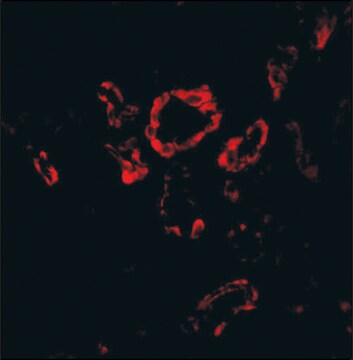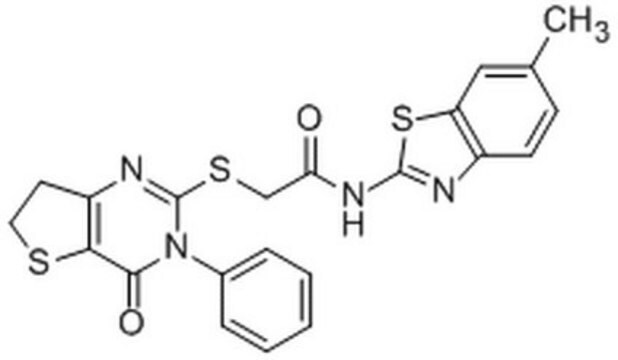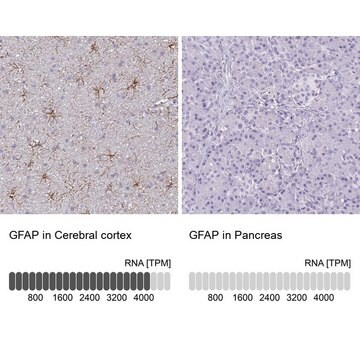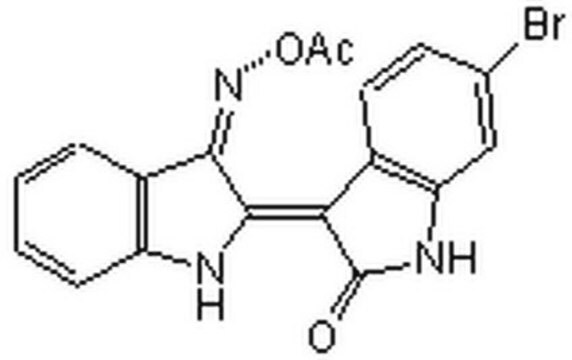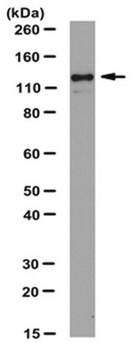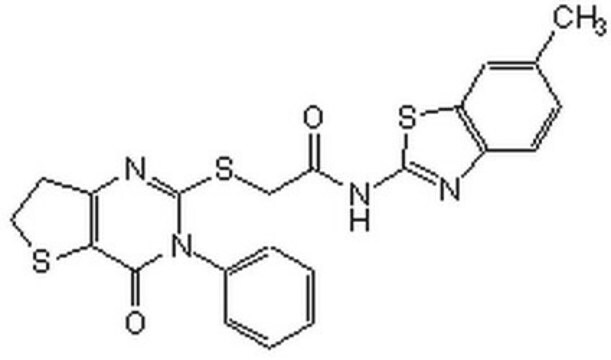おすすめの製品
由来生物
rabbit
品質水準
抗体製品の状態
affinity isolated antibody
抗体製品タイプ
primary antibodies
クローン
polyclonal
化学種の反応性
human
化学種の反応性(ホモロジーによる予測)
rat (based on 100% sequence homology), canine (based on 100% sequence homology), sheep (based on 100% sequence homology), bovine (based on 100% sequence homology), porcine (based on 100% sequence homology)
テクニック
immunohistochemistry: suitable (paraffin)
western blot: suitable
アイソタイプ
IgG
NCBIアクセッション番号
UniProtアクセッション番号
輸送温度
ambient
ターゲットの翻訳後修飾
unmodified
遺伝子情報
human ... SNAI2(6591)
詳細
Zinc finger protein SNAI2 (UniProt: O43623; also known as Neural crest transcription factor Slug, SLUG, Protein snail homolog 2) is encoded by the SNAI2 (also known as SLUG, SLUGH) gene (Gene ID: 6591) in human. SLUG is a transcriptional repressor that modulates both activator-dependent and basal transcription. It is expressed in most adult human tissues, but is not detected in peripheral blood leukocyte. It is observed in discrete foci in interphase nuclei and these nuclear foci do not overlap with the nucleoli, the SP100 and the HP1 heterochromatin or the coiled body, suggesting its association with active transcription or active splicing regions. SLUG is shown to repress BRCA2 expression by binding to its E2-box-containing silencer and recruiting CTBP1 and HDAC1 in breast cells. It contains a SNAG domain (aa 1-20) that resembles a histone H3-like structure and functions as a molecular hook for recruiting LSD1 to repress gene expression in metastasis. SLUG is shown to be involved in the generation and migration of neural crest cells. It also plays a role in mediating RAF1-induced transcriptional repression of the TJ protein, occludin (OCLN) and subsequent oncogenic transformation of epithelial cells. In epidermal keratinocytes, it binds to the E-box in ITGA3 promoter and represses its transcription. SLUG is also involved in the regulation of ITGB1 and ITGB4 expression and cell adhesion and proliferation in epidermal keratinocytes. It can bind to E-box2 domain of BSG and activate its expression during TGFB1-induced epithelial-mesenchymal transition (EMT) in hepatocytes. SLUG phosphorylation by GSK-3 beta results in cytoplasmic localization and degradation. Mutation in SNAI2 gene can cause Waardenburg syndrome 2D that is characterized by sensorineural deafness, pigmentary disturbances, and absence of dystopia canthorum. (Ref.: Lin, Y et al. (2010). EMBO J. 29(11); 1803-16).
特異性
This rabbit polyclonal antibody detects SLUG/SNAI2 in human cells. It targets an epitope within 12 amino acids from the N-terminal half.
免疫原
Epitope: unknown
KLH-conjugated linear peptide corresponding to 12 amino acids from the N-terminal half of human Zinc finger protein SNAI2.
アプリケーション
Research Category
エピジェネティクス及び核内機能分子
エピジェネティクス及び核内機能分子
Anti-SLUG (SNAI2), Cat. No. ABE993, is a highly specific rabbit polyclonal antibody that targets Zinc finger protein SNAI2 and has been tested for use in Immunohistochemistry (Paraffin) and Western Blotting.
Immunohistochemistry Analysis: A 1:250 dilution from a representative lot detected SLUG (SNAI2) in human bone marrow and human pancreas tissues.
品質
Evaluated by Western Blotting in HepG2 cell lysate.
Western Blotting Analysis: 2 µg/mL of this antibody detected SLUG (SNAI2) in 10 µg of HepG2 cell lysate.
Western Blotting Analysis: 2 µg/mL of this antibody detected SLUG (SNAI2) in 10 µg of HepG2 cell lysate.
ターゲットの説明
~31 kDa observed; 29.99 kDa calculated. Uncharacterized bands may be observed in some lysate(s).
物理的形状
Affinity Purified
Format: Purified
Purified rabbit polyclonal antibody in buffer containing 0.1 M Tris-Glycine (pH 7.4), 150 mM NaCl with 0.05% sodium azide.
保管および安定性
Stable for 1 year at 2-8°C from date of receipt.
その他情報
Concentration: Please refer to lot specific datasheet.
免責事項
Unless otherwise stated in our catalog or other company documentation accompanying the product(s), our products are intended for research use only and are not to be used for any other purpose, which includes but is not limited to, unauthorized commercial uses, in vitro diagnostic uses, ex vivo or in vivo therapeutic uses or any type of consumption or application to humans or animals.
適切な製品が見つかりませんか。
製品選択ツール.をお試しください
試験成績書(COA)
製品のロット番号・バッチ番号を入力して、試験成績書(COA) を検索できます。ロット番号・バッチ番号は、製品ラベルに「Lot」または「Batch」に続いて記載されています。
Kai-Yen Peng et al.
Frontiers in oncology, 11, 716055-716055 (2021-09-28)
Over 90% of colorectal cancer (CRC) patients have mutations in the Wnt/β-catenin pathway, making the development of biomarkers difficult based on this critical oncogenic pathway. Recent studies demonstrate that CRC tumor niche-stromal cells can activate β-catenin in cancer-initiating cells (CICs)
ライフサイエンス、有機合成、材料科学、クロマトグラフィー、分析など、あらゆる分野の研究に経験のあるメンバーがおります。.
製品に関するお問い合わせはこちら(テクニカルサービス)